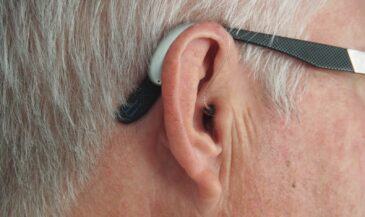By Dr. Christopher Kent
A recent article in a chiropractic publication offered advice on how to choose a chiropractor. [1] The reader was admonished to “suspect brainwashing” if wellness or maintenance care was recommended. The author regurgitated the tired old bromide that “There is no scientific evidence…” This claim must be refuted.
The World Health Organization defines health as being “a state of complete physical, mental, and social well-being, and not merely the absence of disease or infirmity.” [2] Given this broad definition of health, epistemological constructs borrowed from the social sciences may demonstrate health benefits not disclosed by randomized clinical trials. Health benefits such as improvement in self-reported quality-of-life, decreased health care costs, behaviors associated with decreased morbidity, and patient satisfaction may be evaluated using such methods.
Blanks, Schuster and Dobson [3] published the results of a retrospective assessment of subluxation-based chiropractic care on self-related health, wellness and quality of life. This is, to my knowledge, the largest study of its kind ever undertaken regarding a chiropractic population. After surveying 2,818 respondents in 156 practices, a strong connection was found between persons receiving Network care and self-reported improvement in health, wellness and quality-of-life. 95% of respondents reported that their expectations had been met, and 99% wished to continue care.
Coulter et al [4] performed an analysis of an insurance data base, comparing persons receiving chiropractic care with non-chiropractic patients. The study consisted of senior citizens over 75 years of age. It was reported that the persons receiving chiropractic care reported better overall health, spent fewer days in hospitals and nursing homes, used fewer prescription drugs, and were more active than the non-chiropractic patients.
Rupert, Manello, and Sandefur [5] surveyed 311 chiropractic patients, aged 65 years and older, who had received “maintenance care” for five years or longer. Chiropractic patients receiving maintenance care, when compared with US citizens of the same age, spent only 31% of the national average for health care services. There was a 50% reduction in medical provider visits. The health habits of patients receiving maintenance care were better overall than the general population, including decreased use of cigarettes and decreased use of nonprescription drugs. Furthermore, 95.8% believed the care to be either “considerably” or “extremely” valuable.
Rupert [6] reports that 79% of chiropractic patients have maintenance care recommended to them, and nearly half of those comply. In an online survey with 3018 respondents by Miller, [7] 62% responded affirmatively when asked, “Although you feel healthy, would you follow your family member’s lead and visit a doctor who focuses on wellness and prevention just so you can stay feeling that way?”
Clearly, there is a growing body of evidence that wellness care provided by doctors of chiropractic may reduce health care costs, improve health behaviors, and improve patient perceived quality-of-life.
References
1. Andersen GD: “Food for thought 2002: how to choose a chiropractor.” Dynamic Chiropractic 2002;20(3).
2. World Health Organization: The first ten years of the World Health Organization. Geneva: WHO, 1958.
3. Blanks RHI, Schuster TL, Dobson M: “A retrospective assessment of Network care using a survey of self-reported health, wellness and quality of life.” Journal of Vertebral Subluxation Research 1997;1(4):15.
4. Coulter ID, Hurwitz EL, Aronow HU, et al: “Chiropractic patients in a comprehensive home-based geriatric assessment, follow-up and health promotion program.” Topics in Clinical Chiropractic 1996;3(2):46.
5. Rupert RL, Manello D, Sandefur R: “Maintenance care: health promotion services administered to US chiropractic patients aged 65 or older, Part II.” Journal of Manipulative and Physiological Therapeutics 2000;23(1):10.
6. Rupert RL: “A survey of practice patterns and the health promotion and prevention Attitudes of US chiropractors. Maintenance care: Part I.” Journal of Manipulative and Physiological Therapeutics 2000;23(1):1.
7. Miller S: chiroviewpresents.com. Survey says? 2/6/02.






























































































































































